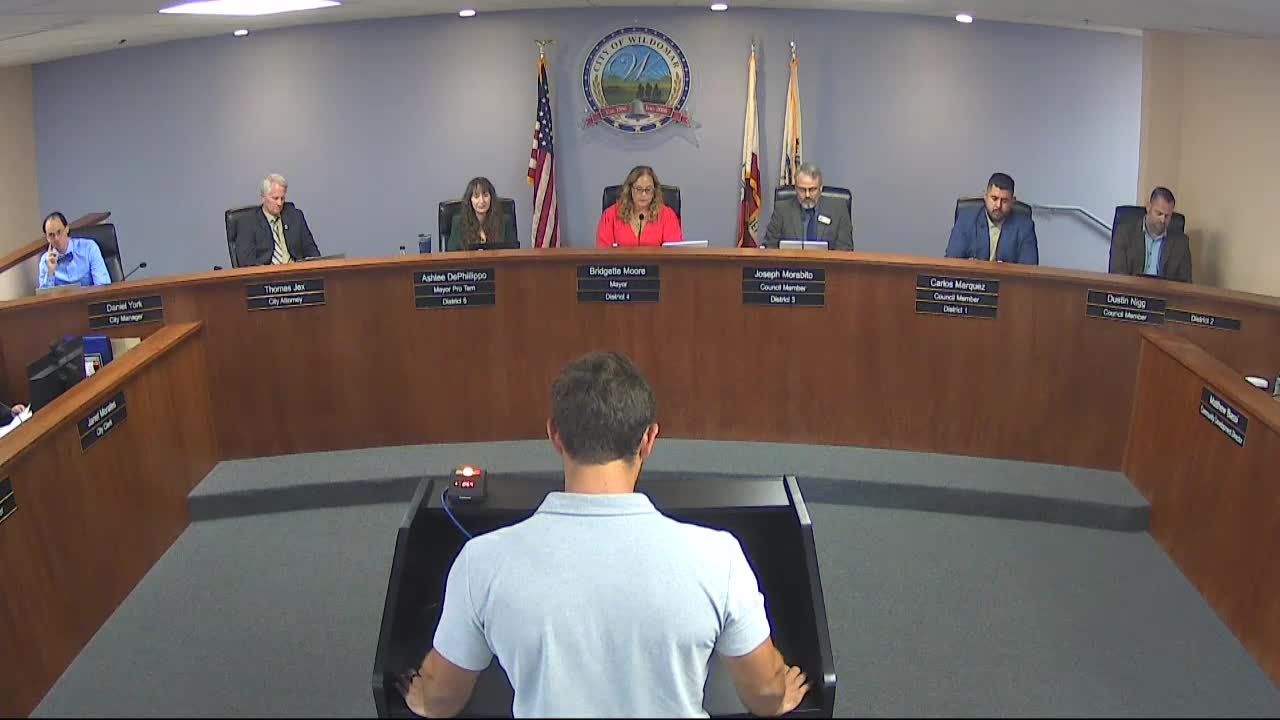Community Divided Over Proposed Zoning Changes
July 10, 2024 | Wildomar City, Riverside County, California

This article was created by AI summarizing key points discussed. AI makes mistakes, so for full details and context, please refer to the video of the full meeting. Please report any errors so we can fix them. Report an error »

In a recent government meeting, community members voiced strong opposition to a proposed change in land use designations along Grand Avenue in Wildomar. The proposal seeks to rezone properties from Low Density Residential (LDR) to Estate Density Residential (EDR), which would require a minimum lot size of two acres. Residents argue that this change would not only devalue their properties but also contradict the city’s commitment to maintaining a rural character.
Several speakers highlighted that the parcels on the east side of Grand Avenue are already smaller than two acres, making the proposed requirements seem inconsistent. Sherry Monroe, a representative from an engineering firm, emphasized the importance of preserving the existing low-density designation, arguing that it aligns with the city’s long-term planning goals and supports affordable housing options for families.
Phil Caballero, whose family has owned property in the area since the 1970s, expressed concerns about the financial implications of the proposed zoning change. He noted that the average income in Wildomar would make it difficult for families to afford the higher costs associated with two-acre lots, potentially leading to vacant properties and a lack of affordable housing.
Bruce Linsley, representing property owners in the area, echoed these sentiments, stating that the proposed change could lead to a decline in property values and disrupt the community’s established character. He pointed out that the demand for half-acre homes remains strong, with many properties in the area selling for significantly higher prices than anticipated.
The meeting underscored a broader debate about land use and community development in Wildomar, with residents advocating for a balance between growth and maintaining the rural feel that attracted them to the area. As discussions continue, the city council faces the challenge of addressing community concerns while navigating state housing mandates.
Several speakers highlighted that the parcels on the east side of Grand Avenue are already smaller than two acres, making the proposed requirements seem inconsistent. Sherry Monroe, a representative from an engineering firm, emphasized the importance of preserving the existing low-density designation, arguing that it aligns with the city’s long-term planning goals and supports affordable housing options for families.
Phil Caballero, whose family has owned property in the area since the 1970s, expressed concerns about the financial implications of the proposed zoning change. He noted that the average income in Wildomar would make it difficult for families to afford the higher costs associated with two-acre lots, potentially leading to vacant properties and a lack of affordable housing.
Bruce Linsley, representing property owners in the area, echoed these sentiments, stating that the proposed change could lead to a decline in property values and disrupt the community’s established character. He pointed out that the demand for half-acre homes remains strong, with many properties in the area selling for significantly higher prices than anticipated.
The meeting underscored a broader debate about land use and community development in Wildomar, with residents advocating for a balance between growth and maintaining the rural feel that attracted them to the area. As discussions continue, the city council faces the challenge of addressing community concerns while navigating state housing mandates.
View full meeting
This article is based on a recent meeting—watch the full video and explore the complete transcript for deeper insights into the discussion.
View full meeting
